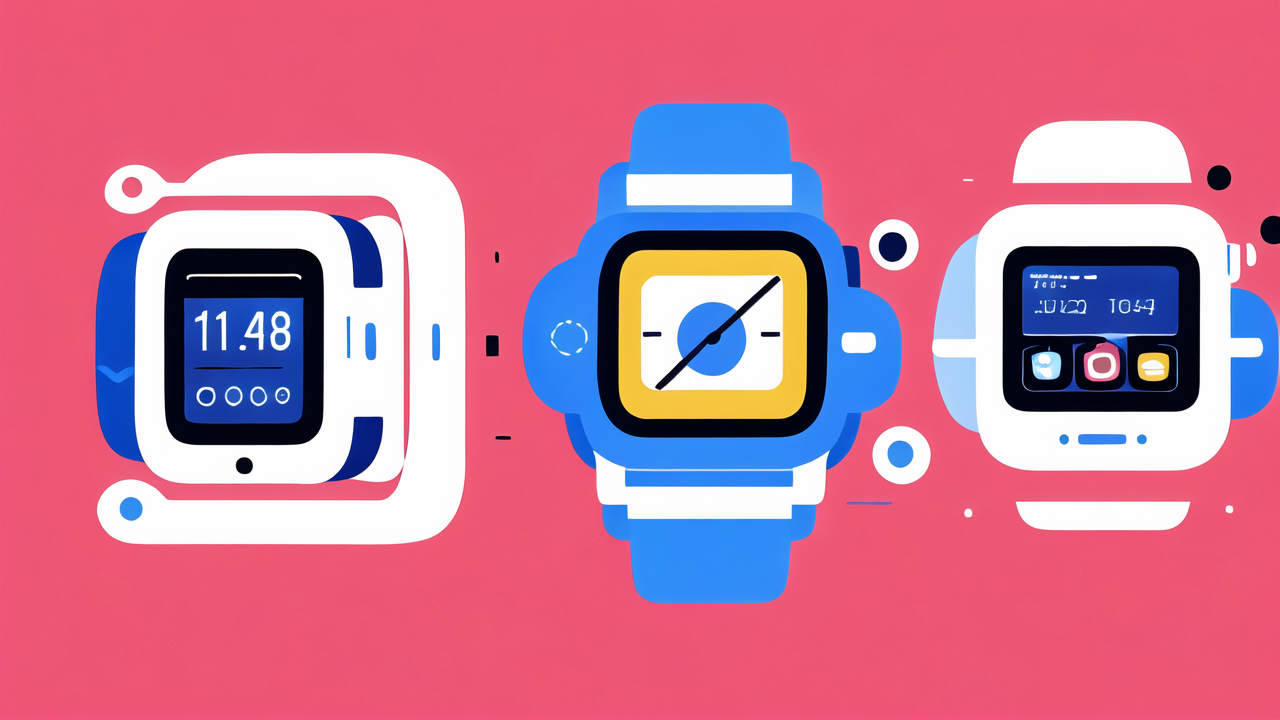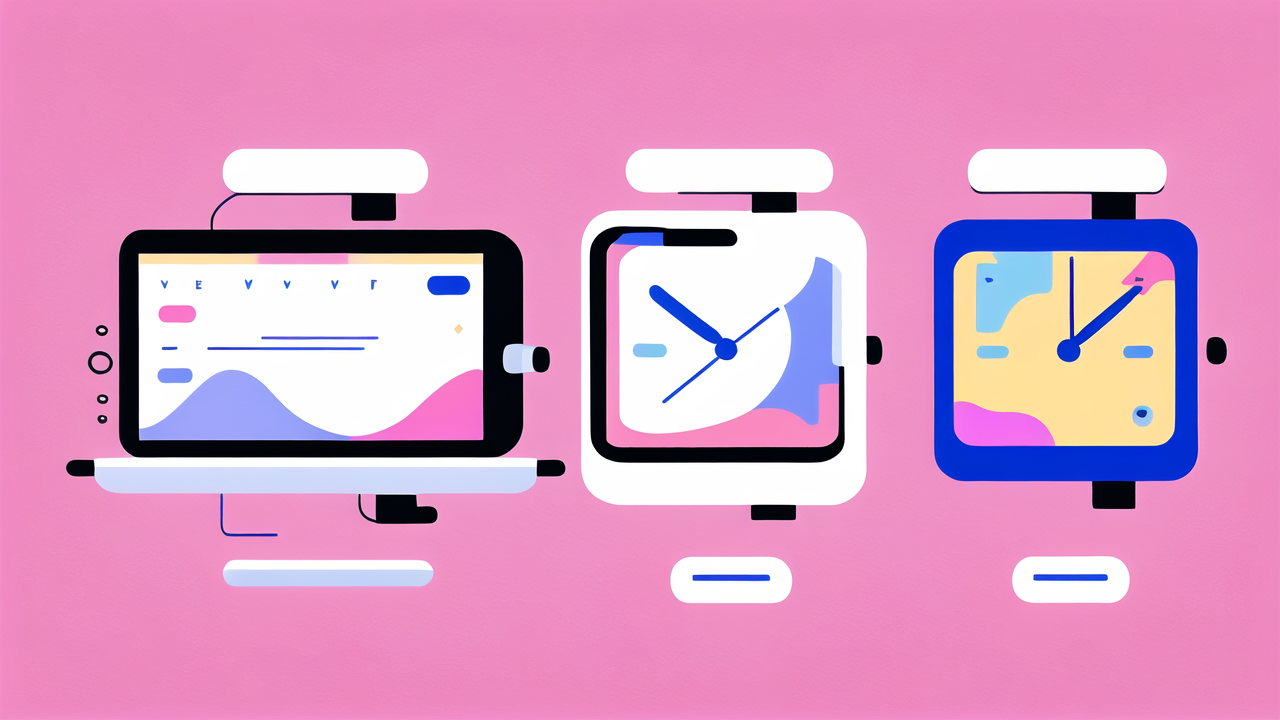Introduction to Wearable Technology
The Early Stages of Wearable Devices
Wearable tech started simple but promising. Early devices were basic step counters. They had few functions and short battery life. These gadgets were often bulky and not very stylish. But they sparked interest in personal health tracking. People liked the idea of monitoring their daily activity. This led to more research and development. Companies saw potential in this new market. They started investing in better designs and features. These early devices paved the way for future innovations. They showed that people wanted easy ways to track their health. This demand drove rapid improvements in wearable technology.

The Road to Modern Wearables
The journey to modern wearables was full of innovation. Designers focused on making devices smaller and more powerful. They worked hard to improve battery life. New sensors were added for better health tracking. The rise of smartphones played a big role. It allowed for better connectivity and data syncing. Companies started to create more advanced wearables. They added features like heart rate monitoring and GPS. Designs became more stylish and comfortable. Water resistance made devices more versatile. Each new feature made wearables more useful in daily life. This progress led to the smart watches we have today.
The Rise of Fitness Trackers
Health Monitoring on the Go
Fitness trackers changed how we think about health. They made it easy to monitor activity all day. Users could track steps, calories, and sleep patterns. This data helped people make better health choices. Trackers motivated users to be more active. They set goals and celebrated achievements. Seeing progress in real-time was a game-changer. It made fitness more engaging and fun. These devices also helped users spot health trends. Many could share data with doctors for better care. Fitness trackers became popular tools for weight loss and wellness. They made health monitoring a part of daily life for many people.
Features and Functions of Early Fitness Trackers
Early fitness trackers focused on a few key features:
- Step counting
- Distance tracking
- Calorie burn estimation
- Sleep monitoring
- Goal setting
These devices used simple sensors to detect movement. They synced with phones to show data. Some had small screens for basic info. Long battery life was a big selling point. Many could last for days or weeks on one charge. As tech improved, more features were added. Heart rate monitors became common. Some trackers added GPS for better distance tracking. Water resistance allowed for swim tracking. These advances made fitness trackers more useful for many activities.
Transition to Smartwatches
Beyond Fitness: The Expansion of Functionality
Smartwatches took wearables to a new level. They combined fitness tracking with smartphone features. Users could check messages and emails on their wrist. They could make calls and use voice assistants. Apps brought endless possibilities to these devices. Weather updates, navigation, and music control became standard. Smartwatches became extensions of our phones. They offered convenience and reduced the need to check phones often. This shift made wearables appeal to more people. It wasn't just about fitness anymore. Smartwatches became tools for productivity and staying connected.
Wearables as a Lifestyle Companion
Smartwatches evolved into true lifestyle companions. They adapted to users' daily needs and habits. Features like contactless payments made shopping easier. Calendar alerts helped manage busy schedules. Meditation apps promoted mental health. Smartwatches became personal assistants on our wrists. They reminded us to stay active and take breaks. They tracked our sleep and suggested improvements. Some even monitored stress levels and offered relaxation tips. This holistic approach to health and wellness set smartwatches apart. They became an important part of many people's daily routines.
The Impact of Smartwatches on Daily Life
Convenience and Connectivity Features
Smartwatches have changed how we stay connected. They offer quick access to important info. Notifications keep us informed without constant phone checks. Voice commands allow hands-free control. This is great for driving or exercising. Many watches now have their own cellular connection. This means they can work without a phone nearby. Users can make calls and send messages from their wrists. Some key features include:

- Quick replies to messages
- Voice-to-text input
- Calendar and reminder alerts
- Weather updates at a glance
- Contactless payments
These features save time and make daily tasks easier. They help users stay organized and efficient.
Redefining Communication with Talkshift-Enabled Watches
Talkshift technology is changing how we use smartwatches. It allows for more natural voice interactions. Users can talk without holding their wrist to their mouth. The watch detects when you're speaking and adjusts. This makes calls and voice commands feel more natural. Talkshift also improves voice recognition accuracy. It filters out background noise for clearer communication. This tech makes smartwatches even more useful in daily life. It's great for situations where using hands is hard or unsafe.
Technology Integration and Ecosystems
Compatibility with Smart Devices
Smartwatches now work well with other smart devices. This makes them more useful and convenient. For example:
- Controlling smart home devices from your wrist
- Unlocking computers or phones when nearby
- Syncing health data across different apps
- Streaming music to wireless earbuds
- Remote camera control for smartphones
This compatibility makes smartwatches powerful tech hubs. They can control many devices from one place. This integration makes managing your tech easier and more fun.
The Emergence of Wearable Ecosystems
Big tech companies have created their own wearable systems. These include watches, fitness trackers, and other devices. They all work together smoothly. This creates a better user experience across devices. Health data syncs automatically between gadgets. Settings and preferences carry over easily. This makes it simple to switch between devices or upgrade. These ecosystems often include:
- Smartwatches
- Fitness trackers
- Smart scales
- Heart rate monitors
- Sleep trackers
Data from all these devices gives a full health picture. This helps users understand their well-being better. It also allows for more personalized health advice.
Advances in Health and Medical Wearables
Preventive Healthcare and Continuous Monitoring
Wearables are becoming powerful tools for health care. They offer non-stop monitoring of vital signs. This can help catch health issues early. Some advanced features include:
- ECG monitoring for heart health
- Blood oxygen level tracking
- Skin temperature sensors
- Stress level detection
- Menstrual cycle tracking
These features help users spot health trends. They can share this info with doctors for better care. Some watches can even detect falls and call for help. This makes them valuable for older users or those with health risks.
Emergency Response Features and Health Alerts
Modern smartwatches include features for emergencies. They can detect accidents and call for help. Some can spot irregular heart rhythms. If found, they tell the user to see a doctor. Other emergency features include:
- SOS buttons for quick emergency calls
- Location sharing with emergency contacts
- Medical ID info for first responders
- Loud alarms to get attention in emergencies
These features give peace of mind to users and their families. They can be life-saving in critical situations.
The Future of Wearable Technology
Predictions and Trends in Wearable Tech
The future of wearables looks exciting. We can expect more advanced health features. Blood pressure checks without a cuff may become common. Glucose monitoring for diabetics could be added. AI will play a bigger role in analyzing health data. This could lead to more personalized health advice. We might see:

- More flexible and comfy designs
- Longer battery life with new tech
- Advanced AR features for info display
- Better voice recognition and AI helpers
- Integration with smart clothing
These advances will make wearables even more useful in our daily lives.
Ethical Considerations and Privacy Concerns
As wearables collect more data, privacy becomes a big concern. Users need to trust their data is safe. Companies must be clear about how they use data. There are also ethical questions to think about:
- Who owns the health data collected by wearables?
- How can insurance companies or employers use this data?
- What should companies do if they detect health issues?
- How can we ensure fairness in AI health recommendations?
Solving these issues is key for the future of wearable tech. It will need teamwork between tech companies, regulators, and users.
Conclusion
Summarizing the Wearable Tech Journey
Wearable tech has come a long way. It started with simple step counters. Now we have advanced health monitors. Smartwatches have become powerful tools for health and staying connected. They've changed how we use technology and look after our health. This journey shows how fast tech can improve. It highlights how important personal tech has become in our lives.
The Potential of Wearable Technologies Moving Forward
The future of wearables is bright and full of potential. We can expect more advanced health features. Wearables will fit into our lives even more smoothly. They will likely play a bigger role in healthcare and fitness. They may become key tools for managing long-term health conditions. As tech gets better, wearables will become more discreet and powerful. They will keep shaping how we live, work, and care for our health. The key will be balancing new features with privacy and ethics.




Leave a comment
This site is protected by hCaptcha and the hCaptcha Privacy Policy and Terms of Service apply.